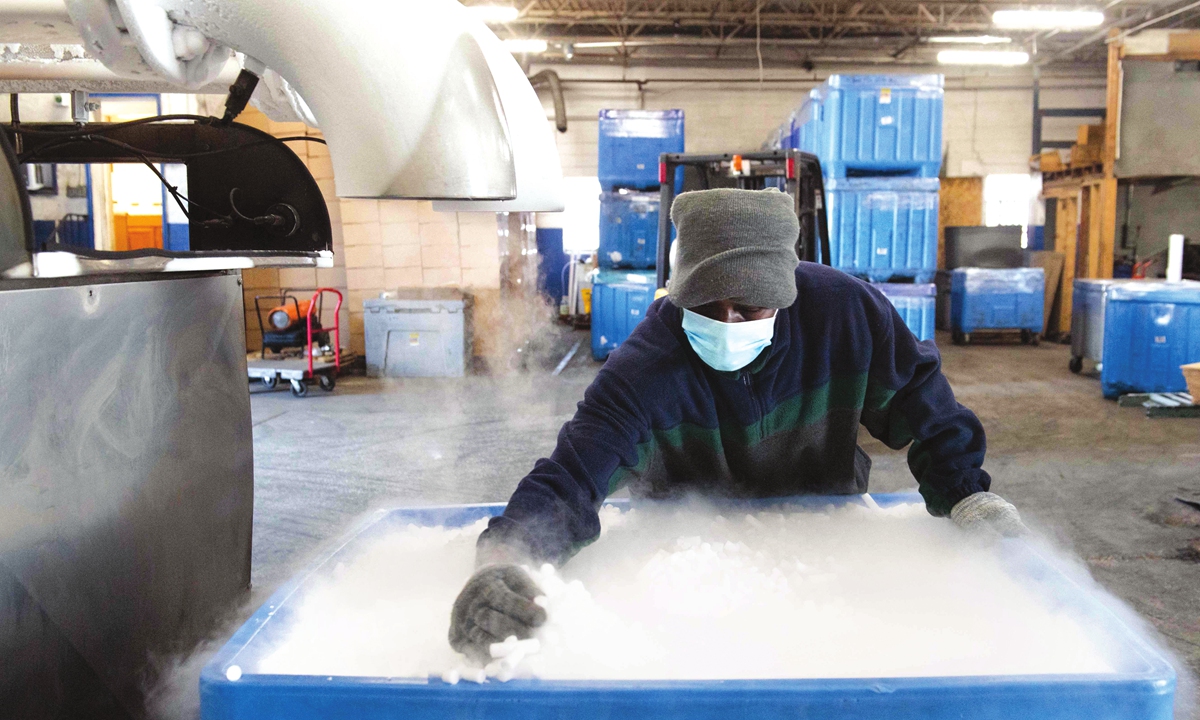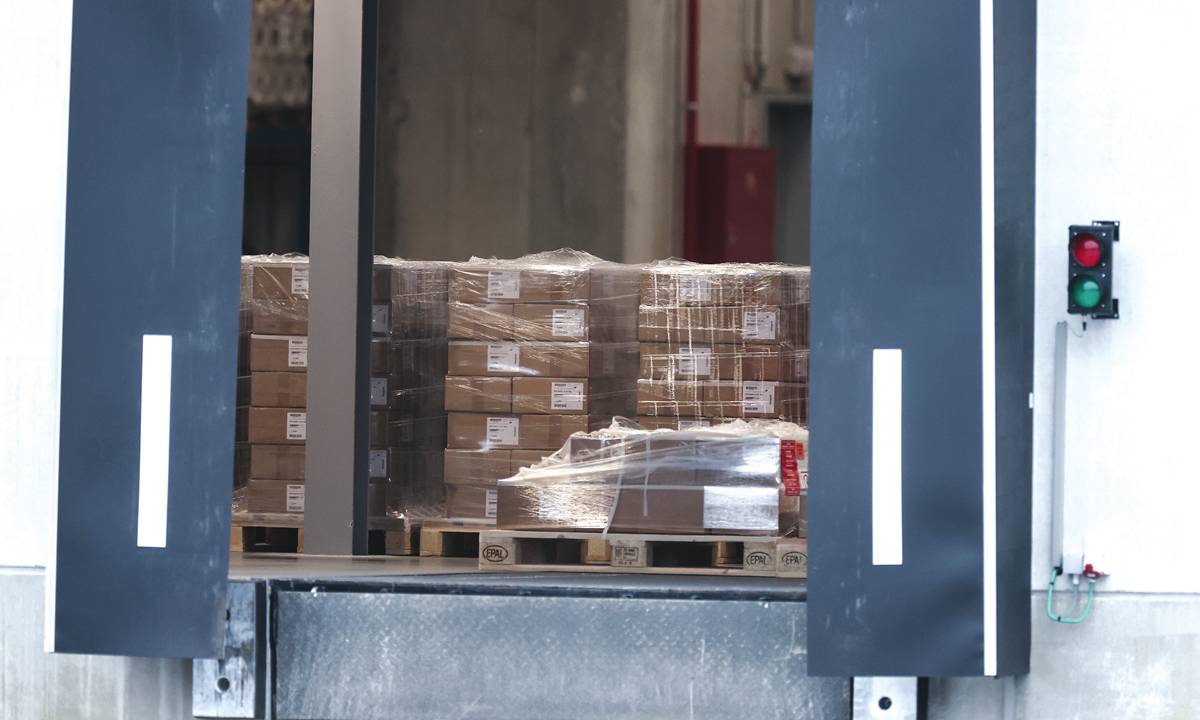First US batch of COVID-19 vaccines will leave out many
Source: Reuters Published: 2020/12/6 17:48:40
The US government's first shipment of millions of coronavirus vaccine doses to be divided among states and federal agencies, including the Department of Defense, will fall far short of protecting high priority groups such as healthcare workers, a Reuters analysis has found.

The first shipment is expected to cover inoculations of 3.2 million people, nowhere near enough for the 21 million US healthcare workers. And government officials said initial shipments would also go to five government agencies including the Departments of Defense, State and the Veterans Health Administration.
The subsequent two weekly vaccine distributions could cover 7 to 10 million people a week, provided a second vaccine from Moderna Inc is authorized as early as the second half of December, and Pfizer meets its distribution estimates, according to data provided by the companies and the Department of Health and Human Services. Federal officials have not disclosed exactly how many doses will be in later shipments.
"For the time being, and the foreseeable future, the demand for vaccines is going to exceed the supply by a lot, even for the highest priority groups that are identified," said Josh Michaud, Kaiser's associate director of global health policy.
States have the final word on how to distribute vaccines to their citizens, but federal officials have said that of some 330 million US residents, healthcare workers and those in nursing homes should be considered first for vaccines. Many states told Reuters that was their plan.
Uneven protection
With early supplies limited, the federal government is allocating doses based on state populations, rather than the proportion of the populations at high risk. That means some states' health workers will be better protected than others.
For instance, Alabama will receive enough vaccines for around 17 percent of its healthcare workers, while Illinois could cover only 13 percent, according to data from state officials. The approach would initially leave out around 190,000 healthcare workers in Alabama and more than 570,000 in Illinois, according to Kaiser Family Foundation data on healthcare workers by state. More than 2 million healthcare workers in California will have to wait as early as vaccine supplies are doled out, based on figures provided to Reuters by state officials.
This first stage of the rollout illustrates the complexity of the government's goal to vaccinate most Americans by mid-2021 to stall a pandemic that has so far claimed more than 273,000 US lives, with hundreds of thousands more deaths projected in the next few months.
US officials maintain they will distribute 40 million doses by the end of 2020 - enough to inoculate 20 million people - with millions of shots shipping every week, assuming speedy approvals of both the Pfizer and Moderna vaccines.
Pfizer, which developed its vaccine with German partner BioNTech SE, told Reuters the US will receive about half of the 50 million doses it will produce in 2020.
Moderna's vaccine could add at least another 12.5 million doses, federal officials have said.
The CDC expects about 5 million to 10 million doses to be shipped per week in the first weeks of the US vaccine distribution effort.

States are preparing for the first distribution to fall short, as hospitals across the country grapple with record numbers of COVID-19 patients and staffing shortages.
"Clinical staff are becoming infected, nurses and doctors. It's creating a workforce crunch and the beds are filling up," said Alan Morgan, chief executive of the National Rural Health Association, an advocacy group for rural hospitals.
Arkansas's state epidemiologist Jennifer Dillaha said vaccines are urgently needed to keep up with the surge in patients.
"We want to ensure our hospital capacity as much as possible through vaccination for those healthcare workers who are at highest risk for infection," she said.
More than half a dozen states told Reuters the first allocation estimates they have been given would not be near enough to cover all their healthcare workers, let alone other high-priority residents.
The size of initial allocation figures shared with Reuters ranges widely, from around 330,000 in California - the most populous US state - to less than 7,000 in North Dakota, which has 50,000 healthcare workers, according to Kaiser data and figures provided to Reuters by state officials.
That means both states can vaccinate less than 20 percent of their healthcare workforce with the first shots. New York State will receive 170,000 shots initially, enough for roughly 13 percent of its healthcare workers.
The US government expects the number of available doses to increase in January to about 60 million to 70 million. It has made deals for 100 million doses of Pfizer's vaccine for $1.95 billion and 100 million of Moderna's for $1.5 billion, with options to buy more. It expects vaccines to be free to most Americans.
Newspaper headline: Delivery gap

An employee makes dry ice pellets at Capitol Carbonic, a dry ice factory, in Baltimore, Maryland, the US on November 20. Photo: VCG
Across the country, state health departments are preparing hospitals for the first shipments of Pfizer Inc's COVID-19 vaccine if the US Food and Drug Administration authorizes it, possibly as early as mid-December.The first shipment is expected to cover inoculations of 3.2 million people, nowhere near enough for the 21 million US healthcare workers. And government officials said initial shipments would also go to five government agencies including the Departments of Defense, State and the Veterans Health Administration.
The subsequent two weekly vaccine distributions could cover 7 to 10 million people a week, provided a second vaccine from Moderna Inc is authorized as early as the second half of December, and Pfizer meets its distribution estimates, according to data provided by the companies and the Department of Health and Human Services. Federal officials have not disclosed exactly how many doses will be in later shipments.
"For the time being, and the foreseeable future, the demand for vaccines is going to exceed the supply by a lot, even for the highest priority groups that are identified," said Josh Michaud, Kaiser's associate director of global health policy.
States have the final word on how to distribute vaccines to their citizens, but federal officials have said that of some 330 million US residents, healthcare workers and those in nursing homes should be considered first for vaccines. Many states told Reuters that was their plan.
Uneven protection
With early supplies limited, the federal government is allocating doses based on state populations, rather than the proportion of the populations at high risk. That means some states' health workers will be better protected than others.
For instance, Alabama will receive enough vaccines for around 17 percent of its healthcare workers, while Illinois could cover only 13 percent, according to data from state officials. The approach would initially leave out around 190,000 healthcare workers in Alabama and more than 570,000 in Illinois, according to Kaiser Family Foundation data on healthcare workers by state. More than 2 million healthcare workers in California will have to wait as early as vaccine supplies are doled out, based on figures provided to Reuters by state officials.
This first stage of the rollout illustrates the complexity of the government's goal to vaccinate most Americans by mid-2021 to stall a pandemic that has so far claimed more than 273,000 US lives, with hundreds of thousands more deaths projected in the next few months.
US officials maintain they will distribute 40 million doses by the end of 2020 - enough to inoculate 20 million people - with millions of shots shipping every week, assuming speedy approvals of both the Pfizer and Moderna vaccines.
Pfizer, which developed its vaccine with German partner BioNTech SE, told Reuters the US will receive about half of the 50 million doses it will produce in 2020.
Moderna's vaccine could add at least another 12.5 million doses, federal officials have said.
The CDC expects about 5 million to 10 million doses to be shipped per week in the first weeks of the US vaccine distribution effort.

Trucks are loaded at a factory of US multinational pharmaceutical company Pfizer, in Puurs, Belgium where COVID-19 vaccines are being produced for Britain, on Thursday. Photo: AFP
Expected shortfallStates are preparing for the first distribution to fall short, as hospitals across the country grapple with record numbers of COVID-19 patients and staffing shortages.
"Clinical staff are becoming infected, nurses and doctors. It's creating a workforce crunch and the beds are filling up," said Alan Morgan, chief executive of the National Rural Health Association, an advocacy group for rural hospitals.
Arkansas's state epidemiologist Jennifer Dillaha said vaccines are urgently needed to keep up with the surge in patients.
"We want to ensure our hospital capacity as much as possible through vaccination for those healthcare workers who are at highest risk for infection," she said.
More than half a dozen states told Reuters the first allocation estimates they have been given would not be near enough to cover all their healthcare workers, let alone other high-priority residents.
The size of initial allocation figures shared with Reuters ranges widely, from around 330,000 in California - the most populous US state - to less than 7,000 in North Dakota, which has 50,000 healthcare workers, according to Kaiser data and figures provided to Reuters by state officials.
That means both states can vaccinate less than 20 percent of their healthcare workforce with the first shots. New York State will receive 170,000 shots initially, enough for roughly 13 percent of its healthcare workers.
The US government expects the number of available doses to increase in January to about 60 million to 70 million. It has made deals for 100 million doses of Pfizer's vaccine for $1.95 billion and 100 million of Moderna's for $1.5 billion, with options to buy more. It expects vaccines to be free to most Americans.
Newspaper headline: Delivery gap
Posted in: AMERICAS